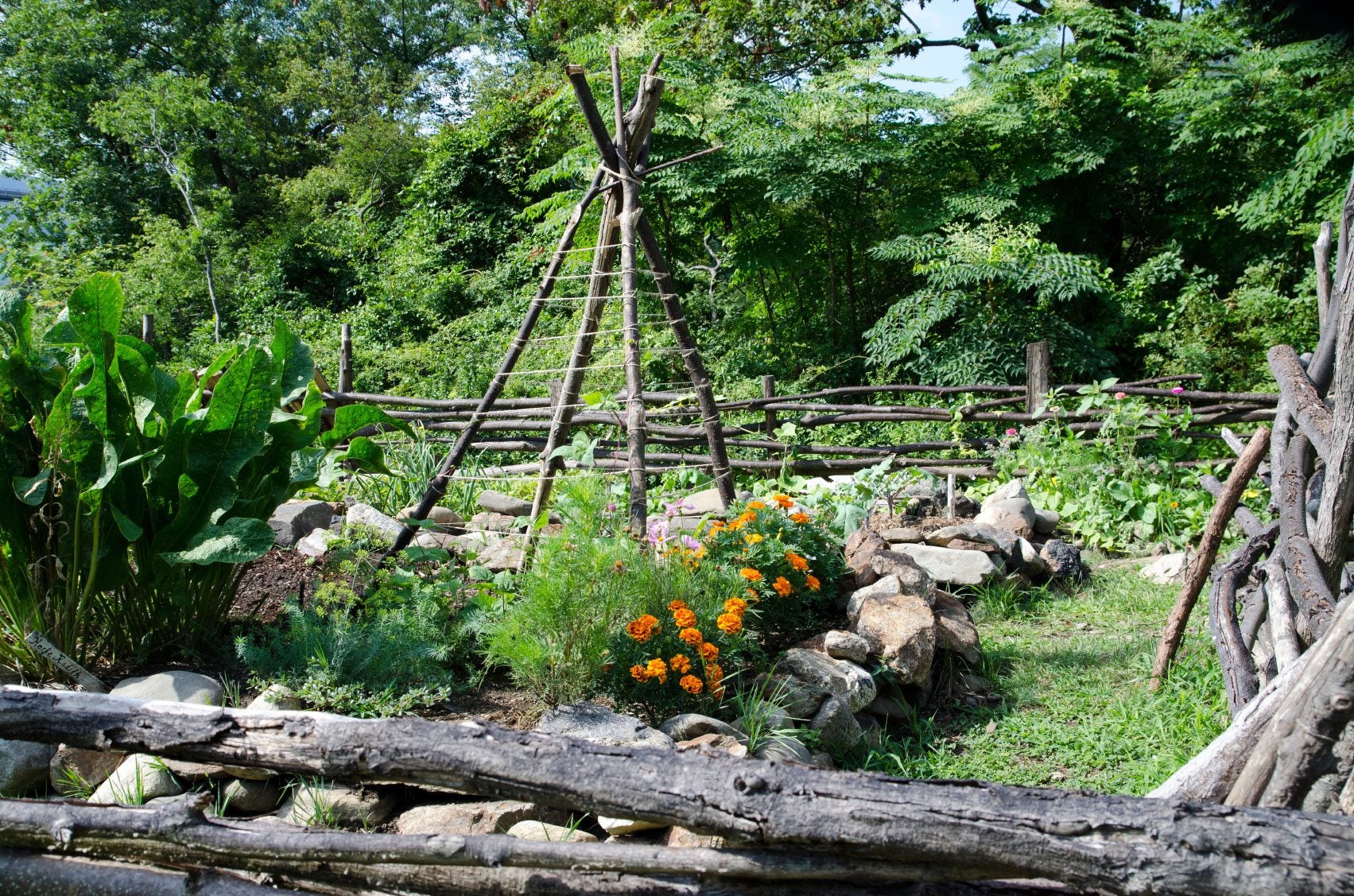Teepee Garden Trellis: Using Teepee Structures In The Vegetable Garden

If you have ever grown any sort of vining plant, you know the importance of a sturdy structure for the vines to cling and clamber up. Using teepee structures in the vegetable garden is a simple, economical way to support these climbers.
Using Teepee Structures in the Vegetable Garden
Teepees in vegetable gardens are quite common for vine crops. A teepee garden trellis can be complex or as simple as a basic teepee of three poles lashed together. Since they are easy to move, using a teepee plant support is ideal for veggies like runner beans that may not be in the same spot next year. The structure is not only visually appealing and simple to make, but it puts veggies at a convenient height for harvest. Teepee garden trellises are ideal not only for beans, but for cucumbers, squash, tomatoes, peas, or chayote, as well as any number of ornamental flowering vines. This vertical structure is especially eye catching with a clematis vine draped dramatically across it.
How to Make a Teepee Trellis
A teepee plant support should be 6 to 8 feet (2 m.) tall (although, a short 4 foot (1 m.) will work for some plants) and can be constructed out of branch cuttings from your own yard for the most elemental and economical trellis. Depending upon the type of wood you use, the poles may only last a year or two or may last for six or seven years. Water loving trees that grow near ponds, swamps, or rivers tend to have great flexibility. Apple, elm, cedar, cypress, and oak branches will last several years while branches from scrubby trees such as mulberry, sycamore, or grapevines will likely rot within a year or two. Many people use bamboo to make their teepee plant support. You can either purchase bamboo poles or if you are lucky enough to have access to a stand, cut your own with a hacksaw. Remove any leaf shoots using pruning shears. Cut the bamboo in 8 foot (2 m.) lengths, creating anywhere from five to ten poles. Allow the poles to dry thoroughly and then they can be used as is or painted or stained. The selection of material for the teepee trellis should be based on its use. For example, if you are using it for annual veggies, material that won't last long works just fine. However, if you are intending to use it for perennial clematis, which will remain in place for many years, choose a material with longevity. Some people even use rebar for the supports of their teepee. A rustic, cool, and eco-friendly repurposing of old tools makes for a charming teepee trellis. Broken shovels and rakes take on a new life. Also, most old tools are made of long lasting, hard woods such as hickory; perfect for the aforementioned clematis. Whatever you decide to use for supports, the basic premise is the same. Take your three to ten supports and tie them together at the top, spacing the bottoms of the supports at ground level and pushing them in a good couple of inches (5 cm.). You can tie the poles with garden twine or something sturdier such as copper wire, again depending upon how permanent the structure will be and how heavy the vine is likely to get. You can cover the copper or iron wire with a rope of grapevines or willow to camouflage it.
Sign up for the Gardening Know How newsletter today and receive a free copy of our e-book "How to Grow Delicious Tomatoes".

Amy Grant has been gardening for 30 years and writing for 15. A professional chef and caterer, Amy's area of expertise is culinary gardening.
